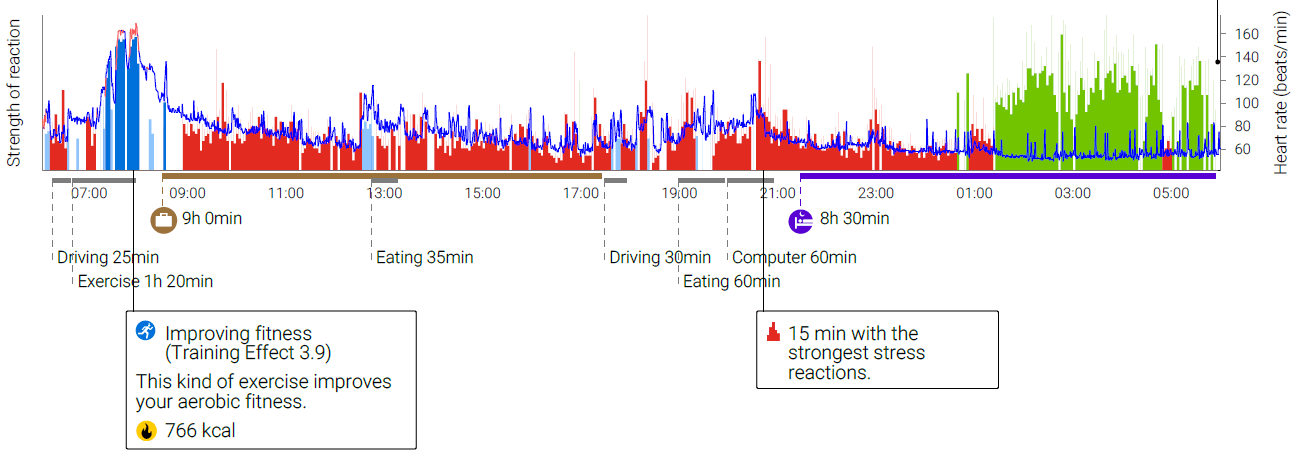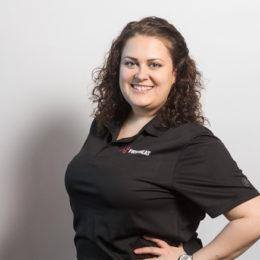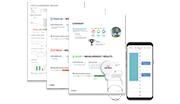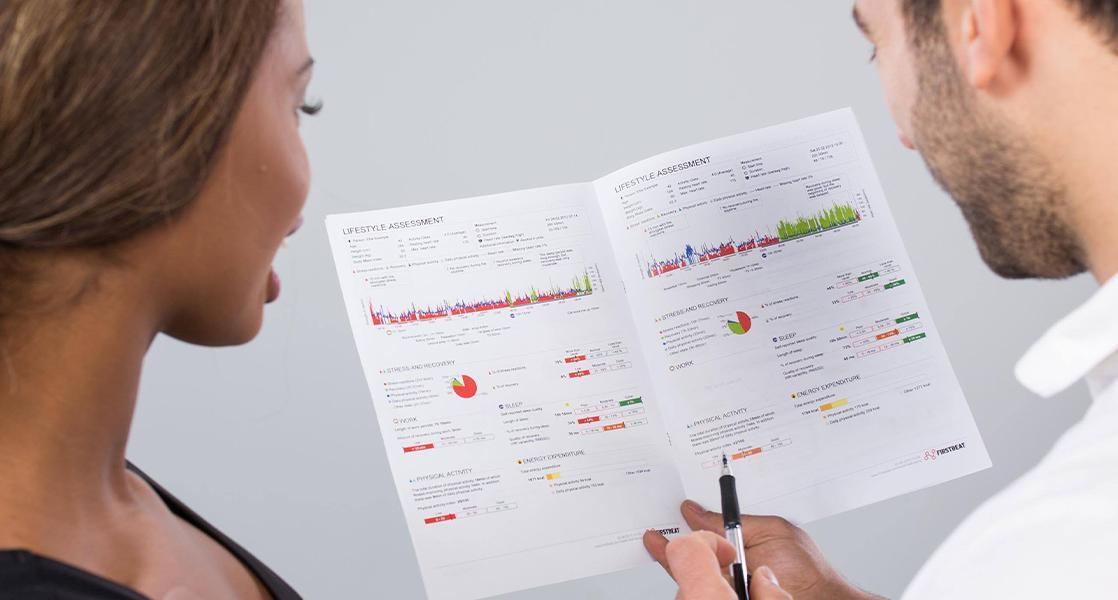
I recently had the opportunity to catch up with SentryOne, when 16 staff members took part in a Firstbeat Lifestyle Assessment for the 3rd time since 2013 (read the case here). Each participant did a 3-day measurement, received a Lifestyle Assessment report and was encouraged to come up with concrete action points to improve personal well-being. As before, I spent a day at the SentryOne office with a group feedback presentation followed by face-to-face discussions. I’ve appreciated the engagement of the company and the individuals, and the project has given Firstbeat valuable feedback about conducting Lifestyle Assessment projects in the US – seeing how the method and message is received in a different culture and helping us improve the process. In this blog, I will discuss the findings and benefits of this type of corporate project, and share a few individual insights.
In addition to the individual results, the company received an anonymous Project Summary. The idea of our group-level reporting is to highlight key findings in stress management, recovery and exercise to enhance staff well-being and performance, identify development areas, and encourage open discussion within the company – at management level, but also “coffee room talk”, people comparing results and sharing good practices. Overall, sleep and recovery seemed to be the hot topic this year. Under the pressure of getting everything done, it’s easy to squeeze too much into a day – and sleep is often what suffers. You might sleep long enough, but if the sleep is not restorative, it’s not going to provide the same benefits. The group result shows this: only half the people felt that they sleep enough, and 73% showed moderate (as opposed to good or poor) recovery during sleep. When comparing the 2014 and 2016 result (with the 9 people who took part both times), the amount of recovery during sleep had dropped slightly. Recovery over 24 hours had increased (they now had a few more relaxing moments during the day), but the result was still a bit below the Firstbeat recommendation of 25-30%. Sufficient recovery to offset the inevitable stressors of life is a balancing act; life tends to alternate between easier and harder days and weeks. It’s important to look behind the average values and see that there were a lot of good nights too, and some of the “bad nights” were explained not so much by bad things, but by facts of life, such as hard exercise, family challenges (e.g. a baby keeping you up or teenager coming home late) or an evening social event with drinks. These facts come out during the personal talks, and rather than dwell on things that belong to life, it’s more relevant to discuss the balance – how different things affect our ability to recover, what are the things we can influence and how to finetune the balance to get enough recovery.
Drawing meaningful conclusions from the group result can be challenging because groups are usually a mix of different individuals in different life situations. This was the case with SentryOne too. A young working mom has different challenges, and needs different reminders, than a middle-aged manager whose children are out of the house – or a fit exercise buff will respond to a different message than someone who is struggling with extra weight and the motivation to fit exercise into their weekly program. A 20-minute chat is not a fix-it-all; however, it can raise issues that are closest to each person’s heart and reality, and motivate them to set a few very personal goals. When these issues are also raised at management or HR level, it can help focus wellness investments and act as a valuable reminder of some basic principles of occupational and overall well-being. Companies are increasingly realizing that “an employee who is fit and feels good is also going to perform better at work”, as CEO Greg Gonzalez concluded in our Success Story, when asked about the benefits of this assessment. Still, the individual stories and take-home messages are the foundation of change, and her are a few examples:
Nick Harsbarger, Vice President of Sales & Marketing at SentryOne, has taken part in the assessment 3 times and in many ways, exemplifies a typical modern corporate profile – he follows good lifestyle principles and is committed to taking care of his fitness. He has gained good exercise points in all his assessments. In the past, he has also shown very good recovery during sleep, but this time it looked a bit different – his heart rate stayed elevated and it took several hours before optimal recovery (green color) started (see example below). Nick was not too surprised about this; he had noticed that sleep no longer automatically comes when his head hits the pillow:
“Each time I’ve come away with valuable insight, specifically as it relates to sleep. With increasing responsibilities and a rapidly growing company, I find it harder to ‘turn my brain off’ at night when it is time for bed. Firstbeat has helped me identify healthier activities and patterns that can result in better quality sleep and more complete recovery.” This is a common discovery among Lifestyle Assessment participants, but fortunately one we can start improving with simple remedies, such as avoiding stressful tasks in the late evening, minimizing computers and work emails before bedtime, avoiding multiple units of alcohol and learning to de-stress with activities such as deep breathing or meditation. Despite the tough demands of today’s working life – or maybe because of them – people across countries and professions are discovering the value of downshifting and finding strategies to combat stress.
For HR Director Jenn Miller, this was her 2nd assessment and since 2014, things have got a lot busier for her because the company has grown and she is now in charge of the HR department. Jenn still gets good recovery during sleep – this is her strength, the resource that keeps her going – but her days are long and busy, with very little time for recovery or breaks – or exercise. “I know I tend to get busy, and seeing all the red color in my report reminds me that it’s important to take a short break now and then, and avoid overbooking myself. I also know that I need to prioritize exercise into my busy lifestyle to continue to stay healthy and well. Sometimes you just need a concrete reminder to get yourself on the right track again.”

Jenn’s day: the steady red graph until slightly past bedtime is a reminder to fit in some breaks – and exercise.
Rick Pittser has also done the assessment several times over the years. This year he had tweaked his exercise routine and enrolled in evening CrossFit classes, instead of his usual early morning runs. He could see in the report how much this affected his normally good sleep. “I was having a hard time sleeping after the heavy evening workouts and when I also saw it in the report, it was a no-brainer to go back to morning exercise, which really is my most natural time to exercise anyway.” Exercise preferences are a personal matter, and evening exercise as such is not a problem, especially if you generally sleep well. That said, the Lifestyle Assessment result has caused many people with sleep problems to re-evaluate their exercise patterns to try to do their hardest workouts earlier in the day or over the weekend, when possible.
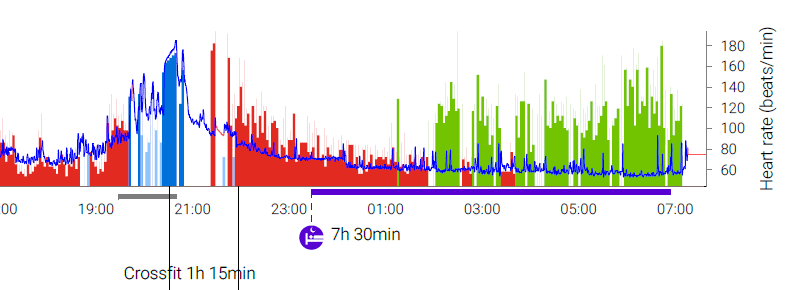
Rick’s result shows that high-intensity evening exercise keeps his body activated a couple of hours into his sleep.
There were many other insights and discoveries. A mom of a couple of small children saw the health and fitness benefits that she got from pushing the stroller up and down a steep hill – a way for her to be with her kids and fit in some exercise at a time when own time is in short supply. One guy discovered that even if actual exercise was missing, his days included enough light physical activity, e.g. walking around, that he accumulated a healthy number of steps, whereas another one saw just the opposite: the report was a stark reminder of how inactive his routine work days in the city are, having to drive everywhere. Physical activity does not accumulate “by itself” – it needs to be scheduled or planned. From my point-of-view, it was once again rewarding to see how sincerely the participants reflected on their individual results and took the messages to heart. Each story is important, which is the essence of Firstbeat Lifestyle Assessment. The company’s biggest benefit stems from individual discoveries – getting better performance from employees who are committed and motivated to take care of their personal well-being.
Do you want to motivate your employees to take better care of their well-being?
You might also be interested in

What is Presenteeism? And How Can We Fix the Multi-billion-pound Problem?
Paying proper attention to the well-being of staff will lead to a better working environment and happier, more productive employees.

The Tissue Box Psychologist: What Does Your First Reaction to Getting Sick Say About You?
Cold and flu season are knocking on the door once again. That means now is the perfect time to look deep and uncover what your reaction to falling under the weather says about you.

3 Days in the Life of a College Student
See how a student is dealing with college life, and what kinds of insights the Lifestyle Assessment might offer to students in general.

